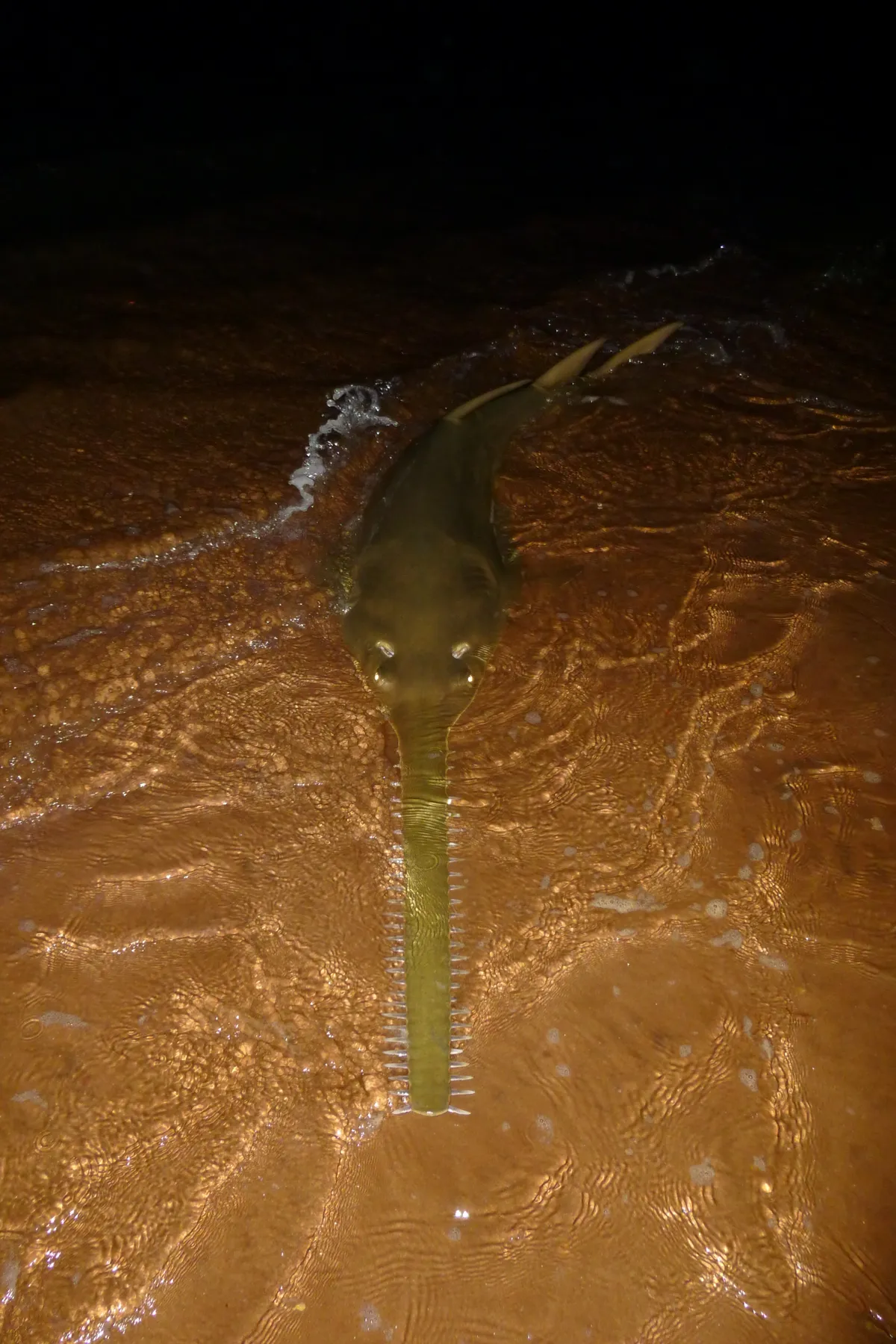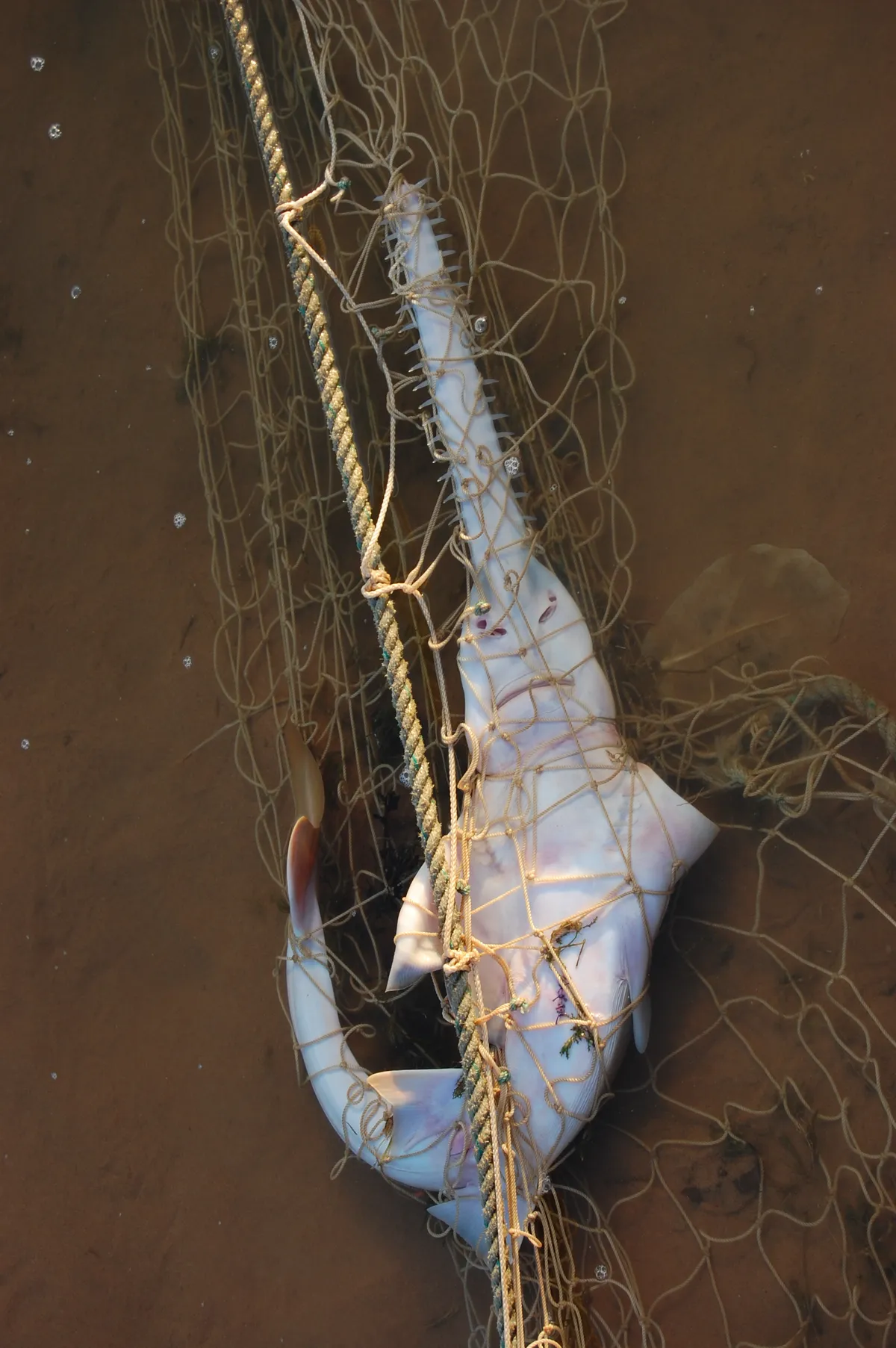1
How many species of sawfish are there?
There are only five species of sawfish, which are found throughout the world in tropical and subtropical waters, but Florida and northern Australia appear to be the last strongholds for these species.
Largetooth (freshwater) sawfish Pristis pristis (main image)
- Circumtropical (occurs in tropical and subtropical waters throughout the world).
- The largetooth sawfish lives in rivers for years as juveniles and moves out to the ocean as it matures.
Smalltooth sawfish P. pecinata
- Occurs in Atlantic Ocean.
- Last stronghold for the species is southern Florida, USA.
Green sawfish P. zijsron (below)
- Occurs in Indo-West Pacific.
- One of the largest species of sawfish.
Dwarf sawfish P. calvata
- Occurs in the Indo-West Pacific, but most commonly in northern Australia.
- One of the two small species of sawfish, the dwarf sawfish still grows over 3 m (9.8 ft) in length.
Narrow sawfish Anoxypristis cuspidata
- Occurs in the Indo-West Pacific.
- The only species to not have rostral teeth on the lower (i.e. near the head) quarter of its rostrum/saw.

2
Are sawfish endangered?
Sawfish are the most threatened shark or ray in the world, with 3 species listed as Critically Endangered and 2 species listed as Endangered on the IUCN red list, and are now fully protected in many countries throughout the world.
Sawfish are threatened largely because of fishing (their saw often becomes entangled in fishing nets and lines) and habitat modification (sawfish often live in nearshore areas and use mangrove systems as nurseries, which are being developed for houses, etc.).

3
How big do sawfish grow?
Some species of sawfish can grow up to 7 metres in length (23 ft), which is larger than a great white shark.
4
Are sawfish sharks?
Sawfish are a type of ray, not a shark. There are very similar looking sharks called sawsharks, but like all sharks, sawsharks have gills on the side of their head, whereas the sawfish and other rays have gills underneath their head.
5
Where did the name 'sawfish' come from?
Sawfish are named after their long rostrum or ‘saw’ on the front of their head, which is lined with a series of rostral teeth. Unlike shark teeth, these rostral teeth (not true teeth) grow continuously like our fingernails, but will not grow back if they are broken at the base.

6
How do sawfish hunt?
Sawfish use their rostrum to sense and stun prey swimming by. This allows them to hunt even in the dark.
Sawfish also use their rostrum to defend themselves from predators like crocodiles and bull sharks.
Please note that externally hosted videos may contain ads.
7
What should I do if I catch a sawfish?
If you catch a sawfish, keep it in the water, and quickly release it by safely removing the hook from its mouth or by cutting your line as close to the hook as possible. Make sure to report your encounter to your regional fisheries office.
8
How can I find out more about sawfish?
International Sawfish Day is held every year on 17 October, and is being celebrated by aquariums, researchers, and sawfish enthusiasts around the world.
The Sawfish Conservation Society provides information about the different species and aims to increase awareness and conservation efforts for sawfish.
Main image: Largetooth sawfish. © David Morgan